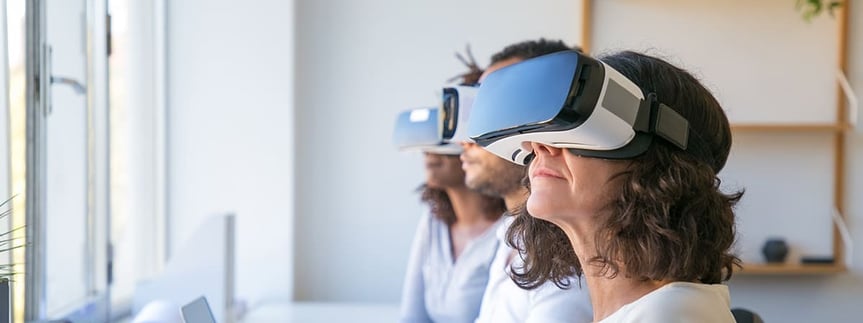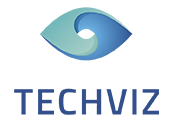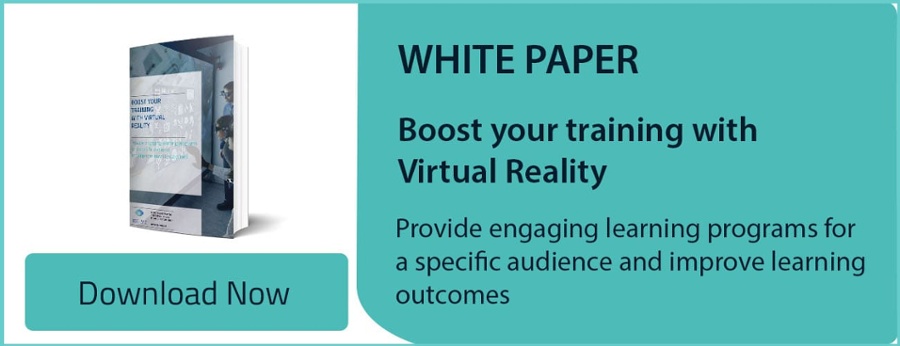![]()
What if learning could be different? Since the Covid-19 crisis, many industries have adopted virtual reality to train their workers. VR training replaces traditional in-person or online training with a fully-immersive experience. And it happened across many industries: construction, engineering, manufacturing, healthcare…
For many years now, our training methods have started to shift. Instead of a standardized knowledge aimed at a population, what if you could have training content tailored to what your employees need, with your own 3D data?
What is Virtual Reality training?
Virtual Reality training is an experiential and immersive learning methodology, where the users are completely immersed in real-world scenarios. It aims at training people in an engaging and safe environment. Humans indeed learn better through “active learning”. It helps them learn faster, retain more information, are greatly motivated and is more effective than traditional learning methods.
Augmented and virtual reality simulations provide industries with interactive virtual environments where employees can safely train their skills and learn by doing. Head-mounted display are becoming more affordable every day. VR technology has been put to the test by many companies. In a nutshell, virtual training radically improves learning outcomes and is the future of training.
How can VR be used in corporate training?
Virtual reality has many applications in corporate training:
- Scenario-Based Learning: the users are put in a real-life situation, and teach them to make realistic decisions
- Technical Skills: the users are taught how to handle complex tasks by interacting with a CAD model at 1:1 scale
- Onboarding: introduce new employees to their missions and workplace from a VR headset
- Simulations: recreate situations that are too expensive or too dangerous to do in the real world
What are the pros and cons of VR training?
What are the benefits of VR training?
1. Saves time and resources
According to this PWC study, employees who are training with VR complete the curriculum 4 times faster than classroom training, and 1,5 times faster than with an online course.
VR sessions are also easy to repeat and scale-up compared to traditional training methods. Plus, you can attend VR courses remotely, as every student can easily be connected to the same virtual room.
2. Increases the engagement of the participants
Still according to PWC, learners are 3.75 times more emotionally connected with training content when it was delivered within a virtual environment. Participant’s motivation is essential for the effectiveness of training.
3. Improves information retention
Real world distractions can have a detrimental influence on learning experiences and one’s abilities to retain information. VR provides a distraction-free learning environment. There are no apps and no notifications, just the user and the virtual world.
4. Can be tailored to the user’s need
In a typical class setting, learners can engage in activities or a pace that are unsuitable to them. With Virtual and Augmented Reality, each person’s training can be individualized to meet their needs.
5. Offers a safe environment for rare scenarios
Some training scenarios are impossible to simulate in real life because they are too expensive, too dangerous, or impractical, such as unexpected start-ups of shut-downs of the factory line. A Virtual Reality scenario allows users to explore and learn from trial and error in a risk-free learning environment.
6. Provides you with better insight on your employee’s progress
To be truly efficient, trainings need to provide learners (and companies) with measures to ensure that the knowledge was retained and the skills obtained. Virtual Reality systems enable to monitor the actions in real time, but also record them for later analysis.

Image by pch.vector on Freepik
What are the limits of VR training?
Most of immersive training is either build like a serious game or a VR simulation. It is very useful for trainings that need to be brought to a large pool of trainees. However, the more specific the skill you need to teach, the more specialized your VR content will be.
For example, you might want to have a technician learn how to do complex mounting, dismounting and maintenance tasks on your own CAD models. But VR training software generally rely on their own content, and may not be compatible with your particular VR software. One solution could be to recreate the content in another format, but it might cost a lot if you work with large-scale 3D models such as vehicles, machinery, or buildings. Another solution could be to convert your data in another format, but risk to lose information.
This is why, for specialized training, industrials rely on non-scalable solutions that have been created to fit their process and existing data.
Is VR training really effective for your professional training?
Virtual Reality is an effective training method across a variety of industries: manufacturing, engineering, architecture… They adopted VR because it offered a cost-effective alternative to traditional in-person training and e-learning. In most situations, you will only need a few VR headsets (HTC Vive, Meta Quest, HP reverb…) and a VR training area of at least 3x3m (10x10ft).
This minimal setup will be enough for a wide variety of use cases, like when you want to educate numerous employees quickly. But for specific setups or a specialized audience, it will still be too generic.
Here are two advanced use cases where “classic” VR training will not be effective.
1. The training applies to a restricted audience
Some training scenarios can only apply to a restricted audience, but still remain essential to the life of a company. In this situation, a simple simulation running in an all-in-one headset might not be sufficient. Will it be close enough to a real-life situation?
For instance, TechViz worked with a rail company who needed to perform specialized maintenance tasks, while trains were still running. So, technicians had to work with the 3D model of each station how to react when a running train was getting close to the station. For this purpose, they needed an immersive room setup for their needs to display large-scale models and run realistic simulations.
2. The skill requires high-end equipment to be learned
The pace of technological change is relentless. The engineers entering the job market, as well as our clients, are born surrounded by information and communications technologies, two main drives of Industry 4.0 and digital transformation. And some skills in these advanced use cases might require both a VR simulation and real objects, or a mix of 3D models layered with 2D interfaces.
For example, we installed a VR control room in the university of Ghent in Belgium to be the virtual counterpart of an assembly line. All the changes made on the virtual screen are transmitted to the real object, and vice-versa. In this situation, to teach students about virtual twins, VR headsets were not adapted for the virtual training.






 Back to Blog
Back to Blog




